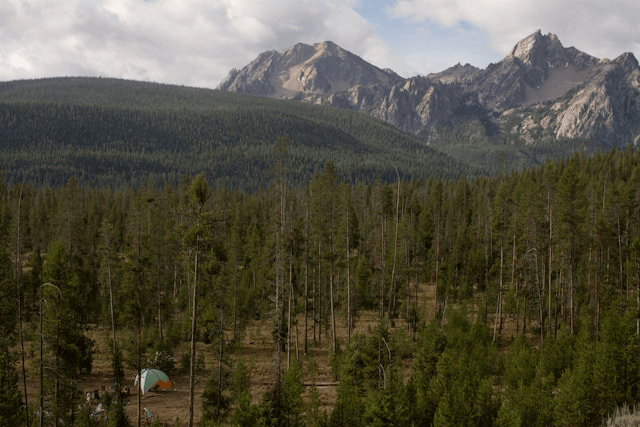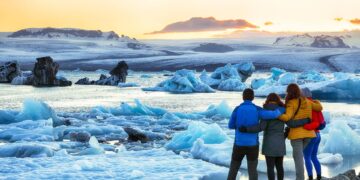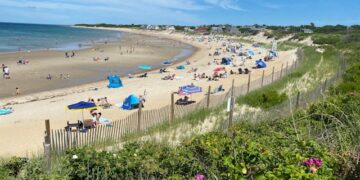If you’ve been dreaming about a quiet escape into the wild, where the stars shine brighter and the trees whisper ancient stories, then camping in a national forest might just be the adventure you’re looking for. Unlike crowded commercial campgrounds or heavily regulated national parks, national forests offer an authentic and often more flexible way to enjoy the great outdoors. Whether you’re a seasoned adventurer or new to outdoor exploration, this experience could redefine what you think of as a camping trip.
What Is National Forest Camping?
National forests are public lands managed by the U.S. Forest Service, encompassing over 190 million acres across the country. They’re different from national parks in that they often allow a wider range of recreational activities, including hunting, fishing, and even foraging. They also come with fewer restrictions and more freedom for campers, especially when it comes to dispersed camping.
Dispersed camping refers to camping outside of developed campgrounds, typically in more remote areas of the forest. This form of camping offers solitude, breathtaking views, and a true sense of freedom, all without the crowds or fees often associated with traditional campsites.
Affordability and Accessibility
One of the biggest reasons people are drawn to camping in national forests is affordability. Many national forest campsites are either low-cost or completely free. If you’re looking for free camping in the USA, national forests are your best bet. Dispersed camping, in particular, is free and widely available, provided you follow certain guidelines and stay within designated areas.
In addition to being budget-friendly, national forests are often more accessible than national parks. Many are located near small towns or within a few hours’ drive from major cities, making them perfect for spontaneous weekend trips.
Enjoy Freedom and Flexibility
Unlike traditional campgrounds where you’re assigned a specific plot next to dozens of other campers, dispersed camping in national forests offers a different kind of experience. You’re free to choose your own spot often with stunning views and complete solitude.
This kind of camping provides more flexibility. Want to bring your dog? No problem most national forests are pet-friendly. Want to set up camp by a river or under a grove of pine trees? You can. This freedom makes it easier to tailor your outdoor adventure to your preferences.
Connect With Nature on a Deeper Level
Camping in national forests allows you to immerse yourself in some of the most beautiful and untouched landscapes in the country. From towering mountain ranges to serene lakes and dense woodlands, these areas are rich in biodiversity and natural beauty.
Because these areas are less trafficked than national parks or commercial campgrounds, you’ll find more opportunities to experience wildlife in their natural habitats. It’s a great setting for hiking, birdwatching, and simply enjoying the peace that comes with being far from civilization.
For photographers, stargazers, or anyone seeking a deeper connection with nature, camping in national forests is an ideal choice.
Build Skills and Embrace Adventure
If you’re someone who enjoys challenges and adventure, then dispersed camping in a national forest can be incredibly rewarding. It’s more primitive than staying at a developed site, which means you’ll need to bring your own water, pack out your trash, and be prepared to manage without amenities like bathrooms or picnic tables.
But that’s part of the appeal.
You’ll develop self-reliance, learn valuable outdoor skills, and truly feel like you’re off the beaten path. Activities such as hiking, fishing, kayaking, or even foraging for wild berries add to the experience. It’s also a great way to teach kids or first-time campers about outdoor safety and responsibility.
Tips for First-Time Campers in National Forests
If you’ve never tried dispersed camping before, don’t worry, it’s more approachable than it sounds. Here are a few tips to get you started:
-
Follow Leave No Trace principles: Pack out everything you bring in, including trash, and avoid damaging vegetation.
-
Know the rules: Some national forests have restrictions on campfire use or vehicle access, especially during dry seasons.
-
Download offline maps: Tools like Gaia GPS, AllTrails, or the official U.S. Forest Service website can help you navigate and find the best places to camp in national forests.
-
Prepare for wildlife: Store food properly and be mindful of local animals.
-
Bring sufficient water: Since there are no facilities, you’ll need to bring your own or have a way to purify natural sources.
Best Places to Camp in National Forests
The United States is home to many beautiful national forests, each offering its own unique scenery and recreational opportunities. Here are a few standout options:
-
Pisgah National Forest (North Carolina): Perfect for waterfall hikes and mountain views.
-
Sawtooth National Forest (Idaho): Known for its alpine lakes and rugged peaks.
-
Los Padres National Forest (California): Great for coastal hikes and ocean views.
-
White River National Forest (Colorado): Ideal for high-altitude camping and wildlife spotting.
-
Coconino National Forest (Arizona): Offers red rock landscapes and pine forests.
No matter where you are in the U.S., there’s likely a national forest within driving distance waiting to be explored.
Final Thoughts
Camping in a national forest is one of the most enriching and accessible ways to enjoy the outdoors. Whether you’re drawn to the idea of dispersed camping for its solitude or you want to explore the best places to camp in national forests for your next vacation, you’ll discover an experience that’s not only affordable but deeply fulfilling.









